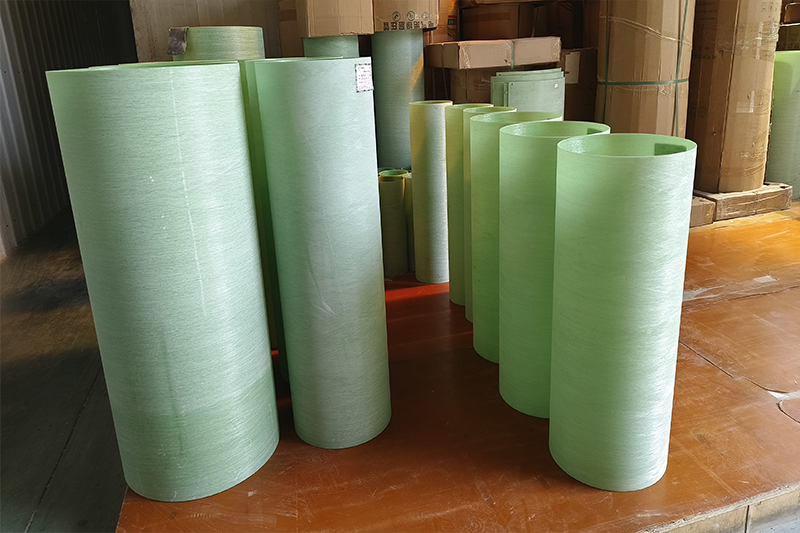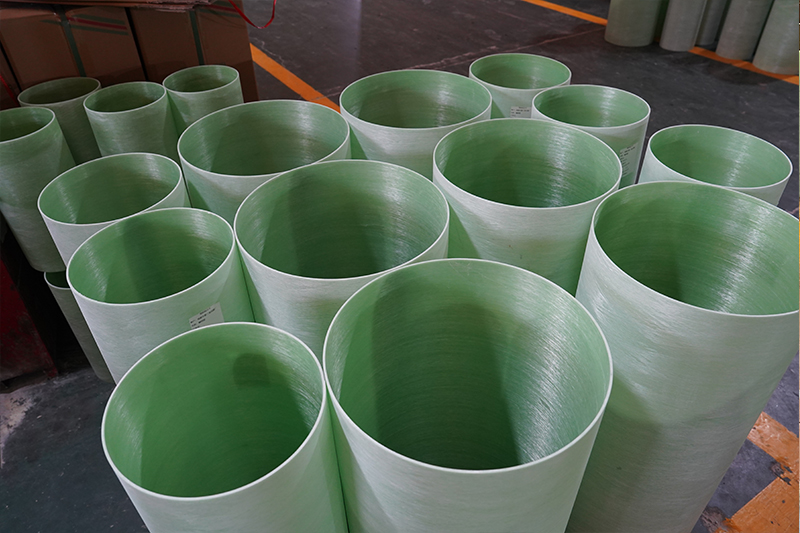In demanding applications such as high-voltage electrical equipment, aerospace, and precision scientific research instruments, the quality of insulating components is directly related to the safe and stable operation of the entire system. G10 epoxy glass fiber filament winding tube, due to its excellent overall performance, has become a key insulation material in high-voltage applications. To fully realize the potential of G10, a thorough understanding of its design considerations is crucial. This article systematically analyzes the key application points of G10 tube in high-voltage equipment, providing engineers with practical design references.
Before delving into design details, it is important to clarify the basic concepts involved. G10 is an industrial-grade laminate material made from continuous alkali-free glass fiber cloth impregnated with epoxy resin and then subjected to a high-temperature, high-pressure lamination or winding curing process. “Epoxy glass fiber wound tube” specifically refers to a tubular product formed by precisely winding epoxy-impregnated continuous glass fiber strands around a mandrel at a predetermined angle. This unique manufacturing process combines extremely high mechanical strength with excellent electrical insulation properties.

Preventing dielectric breakdown and leakage is paramount in high-voltage equipment.
Dielectric strength: This is a key parameter for the material’s resistance to high-voltage breakdown. The design must ensure that the G10 tube wall thickness can withstand the equipment’s maximum operating voltage, including transient overvoltages and surge surges. Design calculations should comprehensively consider both creepage distance and insulation thickness breakdown.
Dielectric constant and dissipation factor: In high-frequency, high-voltage applications, lower dielectric constant and dissipation factor can effectively reduce energy loss and heat accumulation, avoiding the risk of thermal runaway. G10 material performs well in this regard, but in extremely high-frequency applications, more specialized alternative materials may need to be considered.
Arc resistance and tracking resistance: In polluted and humid environments, arcing can form carbonized conductive paths on the material surface. G10 has excellent arc resistance and tracking resistance, but in extreme conditions, surface treatment or structural design may still be needed to increase effective creepage distance.
Insulation components in high-voltage equipment often face complex mechanical stress environments.
Axial and Hoop Strength Configuration: The core advantage of the filament winding process lies in the ability to precisely control the mechanical properties of the pipe by adjusting the winding angle. Winding at a high angle, approaching 90°, significantly enhances hoop strength and is suitable for burst resistance in gas- or oil-filled equipment. Winding at a low angle improves axial strength and is suitable for supporting structures subjected to tensile and compressive loads.
Interlaminar Shear Strength: When pipes are subjected to radial impact or bending moments, interlaminar bond strength is particularly critical. A high-quality resin system and standardized curing process are essential for ensuring interlaminar shear strength.
Dimensional Stability and Tolerance Control: G10 material has low moisture absorption and a thermal expansion coefficient that matches metal, maintaining dimensional stability under varying temperature and humidity conditions. This is crucial for the precision assembly of high-voltage equipment. Precise tolerance requirements for inner and outer diameters, roundness, and straightness must be clearly defined during design.

The heat generated by high-voltage equipment during operation and ambient temperature fluctuations place stringent demands on the thermal performance of the material.
Long-Term Temperature Resistance: The long-term operating temperature of standard G10 material is typically around 130°C. The design must ensure that the tube temperature does not exceed this limit, even at the equipment’s maximum operating temperature and under short-term overload conditions. Failure to do so will lead to resin degradation and performance degradation.
Thermal Conductivity: Although G10 inherently has poor thermal conductivity, applications requiring heat dissipation, such as in switchgear insulation sleeves, may require the addition of thermally conductive fillers or the implementation of specialized cooling structures.
Coefficient of Thermal Expansion Matching: G10’s coefficient of thermal expansion is similar to that of common metal materials such as copper and aluminum, which helps reduce thermal stress generated during temperature cycling when connected to metal components.
Environmental Resistance: The design must assess the presence of influencing factors such as oil, chemical solvents, and UV rays in the application environment. G10 has good resistance to most solvents, but prolonged exposure to strong acids, bases, or outdoor UV rays may require additional protective measures.
Processing Characteristics: G10 tube often requires machining, such as turning, milling, and drilling, to adapt to installation requirements. Consider machining feasibility during the design phase, avoiding stress concentrations such as sharp corners and excessively thin walls. Thorough cleaning after machining is required to prevent residual metal particles that could affect insulation performance.
Successfully implementing G10 epoxy glass fiber filament wound tube in high-voltage equipment involves more than simply selecting an insulation material. It involves a comprehensive system engineering approach that considers electrical stresses, mechanical loads, thermal management, and environmental factors.
By collaborating closely with experienced material suppliers and manufacturers to identify all application boundary conditions, a reliable, long-lasting, and cost-effective high-voltage insulation solution can be designed. Proper design considerations will ensure optimal performance of G10 filament winding tube in high-voltage applications, ensuring safe and stable equipment operation.
If you need our products please write down any questions, we will reply as soon as possible.
There are three ISO certificates for quality certification. The certificates will be shown later. ISO
After receiving the advance payment, the production cycle is 15-25 days. And the transportation cycle should be calcul……
We supply with installation guide and user manual for each transformer. If you do not understand them. We will offer v……